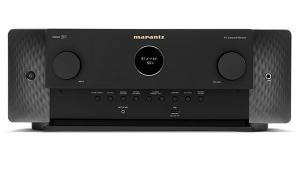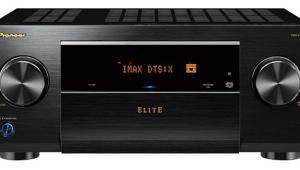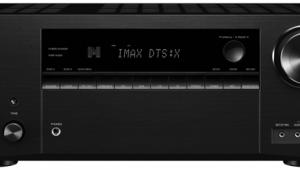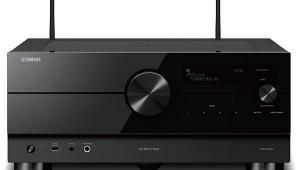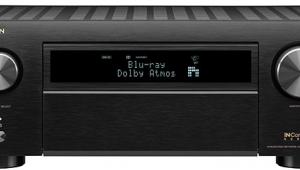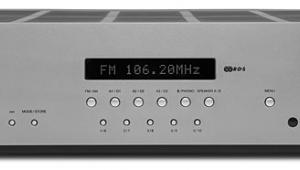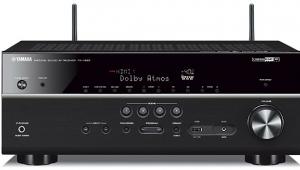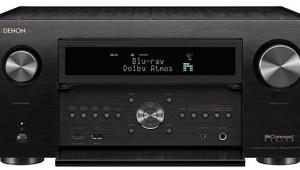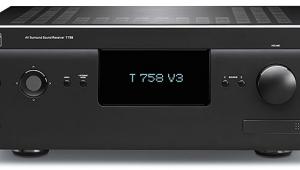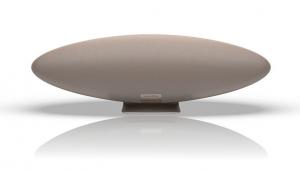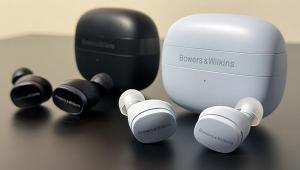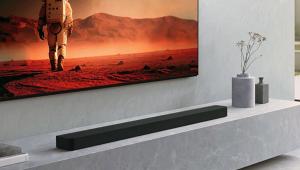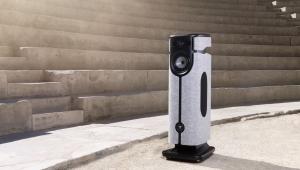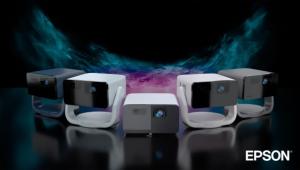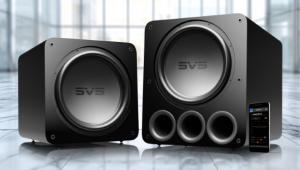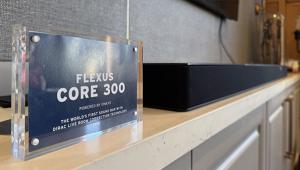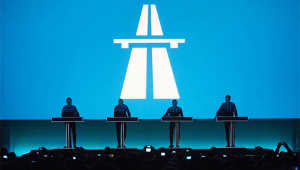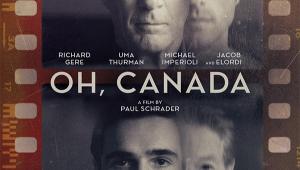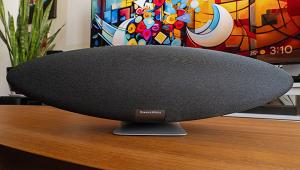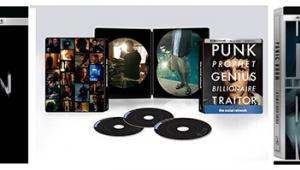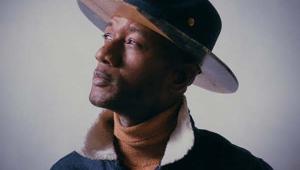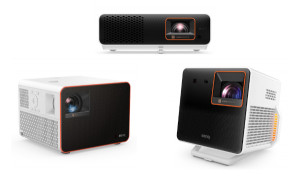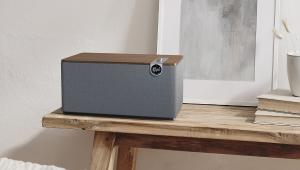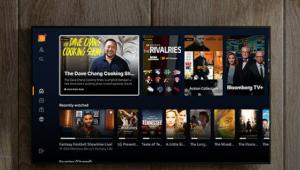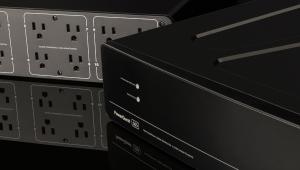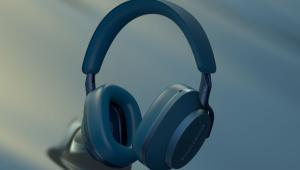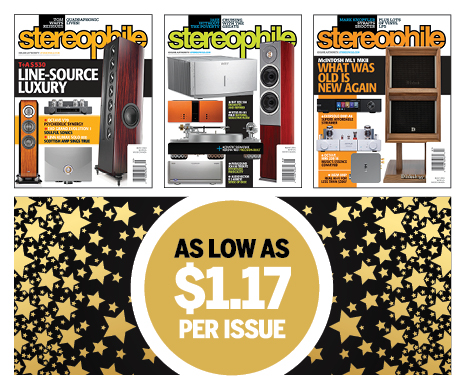Face Off: Budget Receivers Kenwood VR-309
 If you are an avid reader of Home Theater magazine (and who isn't?) you might remember this receiver from the review I did of the Kenwood HTB-502 home-theater-in-a-box. You can either buy the HTB-502 for $600, or Kenwood offers the receiver separately for $399 (personally, I'd buy the HTB-502, it sounds awesome!). To recap, the VR-309 features Dolby Digital/DTS processing and is rated at 100 watts per channel. The back panel reveals way more than I'd ever think possible on such an inexpensive receiver. All the analog ins and outs are there, but get this, the VR-309 has S-video switching! Neither the Yamaha or Technics feature this—I don't know how Kenwood managed to do this for the price, but good for them. Kenwood also did it right by putting two coaxial digital inputs and one Toslink optical digital input on the back and using UL-approved collars for all the channels. The VR-309 also features system-control outputs for controlling other compatible components. Setting up the Kenwood was a breeze—the supplied remote is extremely intuitive and the fact that all of the channel levels can be adjusted separately makes things that much easier.
If you are an avid reader of Home Theater magazine (and who isn't?) you might remember this receiver from the review I did of the Kenwood HTB-502 home-theater-in-a-box. You can either buy the HTB-502 for $600, or Kenwood offers the receiver separately for $399 (personally, I'd buy the HTB-502, it sounds awesome!). To recap, the VR-309 features Dolby Digital/DTS processing and is rated at 100 watts per channel. The back panel reveals way more than I'd ever think possible on such an inexpensive receiver. All the analog ins and outs are there, but get this, the VR-309 has S-video switching! Neither the Yamaha or Technics feature this—I don't know how Kenwood managed to do this for the price, but good for them. Kenwood also did it right by putting two coaxial digital inputs and one Toslink optical digital input on the back and using UL-approved collars for all the channels. The VR-309 also features system-control outputs for controlling other compatible components. Setting up the Kenwood was a breeze—the supplied remote is extremely intuitive and the fact that all of the channel levels can be adjusted separately makes things that much easier. ![]() The Kenwood is the clear winner of our Face Off. Whereas the Yamaha got most things right, the Kenwood seemed to get everything right. "The bass was just right," said Monica, "not too little and not too much" (I think she's been reading Goldielocks and the Three Bears). Mike chimed in: "The VR-309 displayed better bass definition and had a much more cohesive tonal balance." I too felt the Kenwood had the best tonal balance and was easily the most dynamic. The VR-309 had no trouble running all of the speakers full range. I dare say that in a medium-sized room, you don't really need to use a subwoofer with this receiver. The Yamaha outperformed the Kenwood on center-channel intelligibility, but the difference was fairly minor. What more can I say about the VR-309? It is a terrific sounding receiver that, in my opinion, should sell for a lot more than the measly $399 that Kenwood is asking for it.
The Kenwood is the clear winner of our Face Off. Whereas the Yamaha got most things right, the Kenwood seemed to get everything right. "The bass was just right," said Monica, "not too little and not too much" (I think she's been reading Goldielocks and the Three Bears). Mike chimed in: "The VR-309 displayed better bass definition and had a much more cohesive tonal balance." I too felt the Kenwood had the best tonal balance and was easily the most dynamic. The VR-309 had no trouble running all of the speakers full range. I dare say that in a medium-sized room, you don't really need to use a subwoofer with this receiver. The Yamaha outperformed the Kenwood on center-channel intelligibility, but the difference was fairly minor. What more can I say about the VR-309? It is a terrific sounding receiver that, in my opinion, should sell for a lot more than the measly $399 that Kenwood is asking for it.
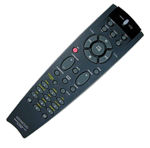 I've been saying for quite some time now that receivers seem to be getting better and better, and I think this Face Off proved it. Although the Technics had a few problems with dynamics, it sounded pretty good when run with a sub/sat system. The Yamaha has its own distinctive sound that many people will enjoy, plus it has a 6-channel input for use with future formats. Even so, I recommend the Kenwood; it has more of the features you want and can use now, and it just sounds so darn good. The Kenwood VR-309 is probably the steal of the century. Sure, it may not have everything you are looking for in a receiver but $399 with S-video switching, you're getting a great bargain. So can you live with an under-$400 receiver? You betcha!
I've been saying for quite some time now that receivers seem to be getting better and better, and I think this Face Off proved it. Although the Technics had a few problems with dynamics, it sounded pretty good when run with a sub/sat system. The Yamaha has its own distinctive sound that many people will enjoy, plus it has a 6-channel input for use with future formats. Even so, I recommend the Kenwood; it has more of the features you want and can use now, and it just sounds so darn good. The Kenwood VR-309 is probably the steal of the century. Sure, it may not have everything you are looking for in a receiver but $399 with S-video switching, you're getting a great bargain. So can you live with an under-$400 receiver? You betcha!
Highlights
• S-video switching for under $400!—I'm sold
• The steal of the century
• So good and so cheap, I'm buying one for my parents!

 HT Labs Measures: Kenwood VR-309
HT Labs Measures: Kenwood VR-309
The above measurement shows that the VR-309's left amplifier channel, with two channels driving 8-ohm loads, began clipping at 0.008% distortion and 63.5 watts. The amp reaches 0.1% distortion at 89.5 watts and 1% distortion at 108.5 watts, as shown above. Into 4 ohms, the amplifier begins clipping at 120 watts and reaches 0.1% distortion at 142.3 watts and 1% distortion at 171.4 watts.
The analog frequency response was +/-0.5 dB from 20 Hz to 20 kHz. The response dropped to -1.9 dB at 10 Hz and to -1.7 dB at 50 kHz. Crosstalk was -47.3 dB from left to right at 1 kHz and -46.9 dB from right to left at 1 kHz. THD+N from the amplifier was less than 0.011% at 1 kHz.
From the Dolby Digital input to the loudspeaker outputs, the left, center, and surround channels are all flat, +/-1.7 dB from 20 Hz to 20 kHz. From the Dolby Digital input to the line-level output, the LFE channel is -0.6 dB at 20 Hz and reaches the upper 6-dB down point at 118 Hz.—AJ
- Log in or register to post comments
